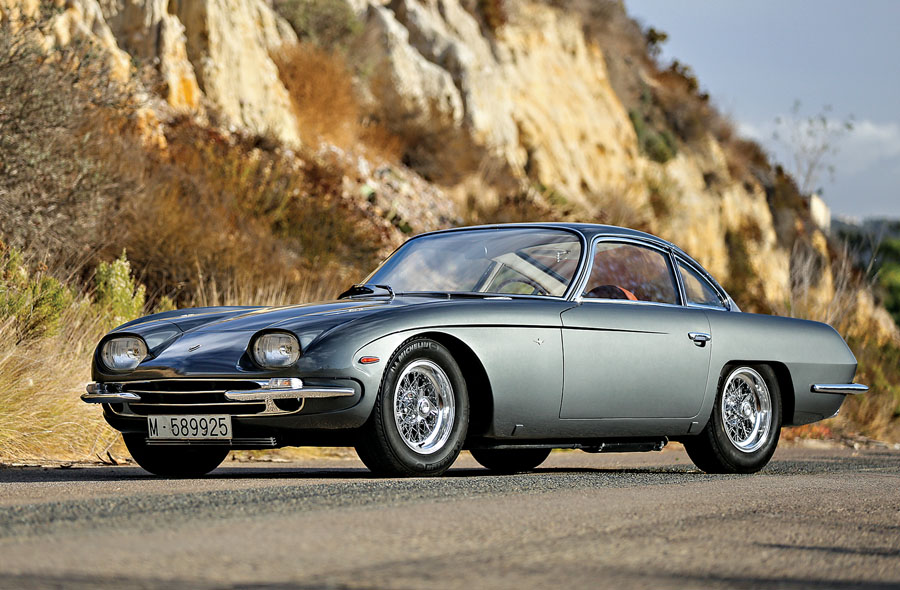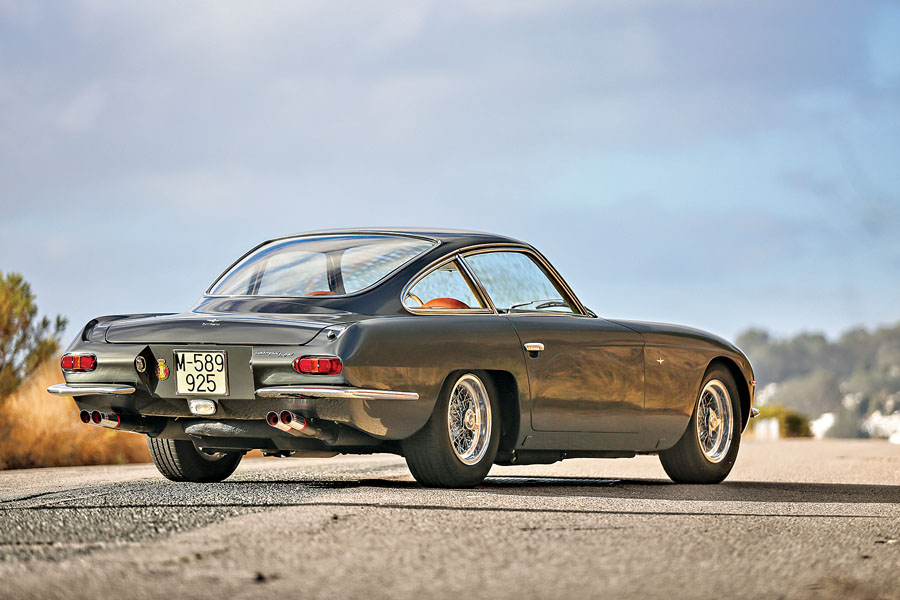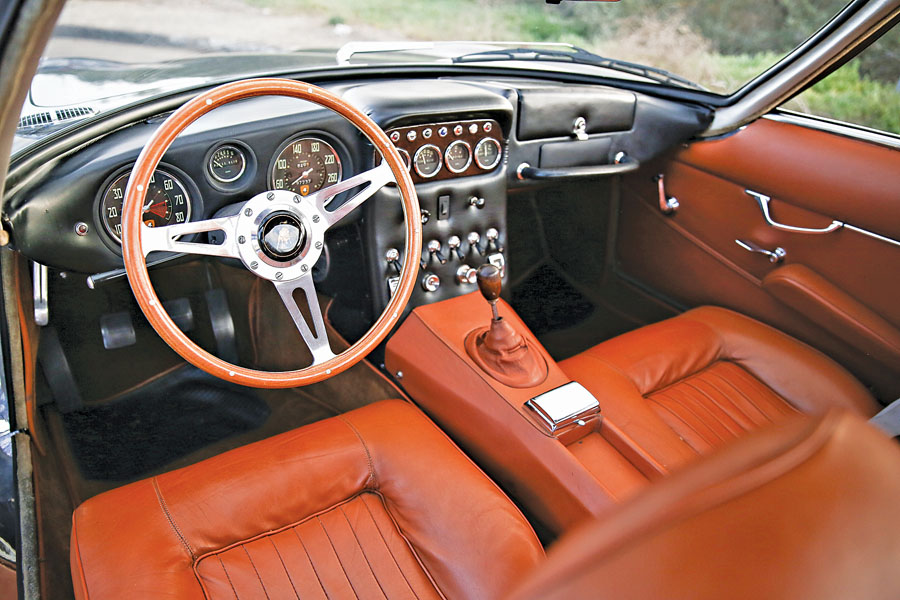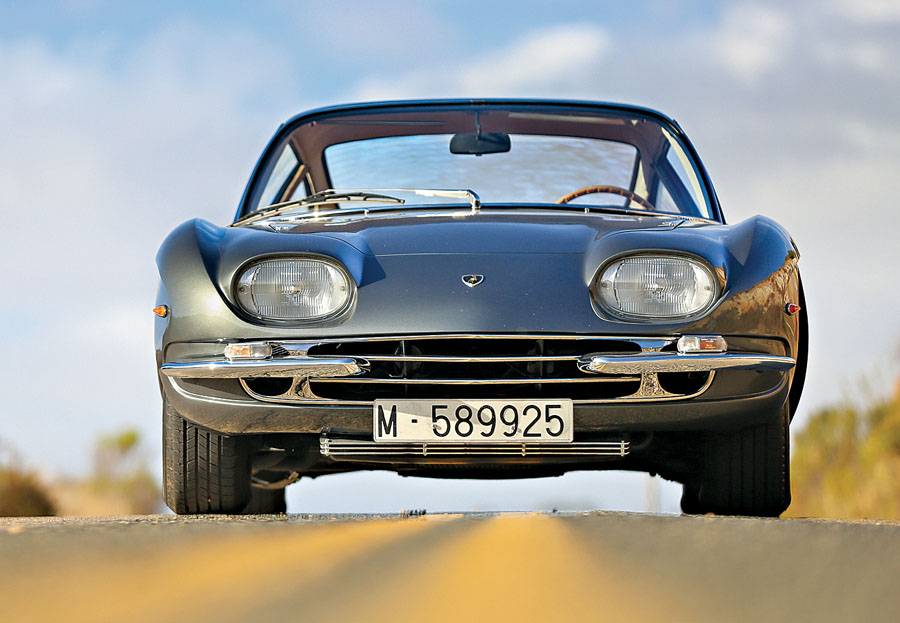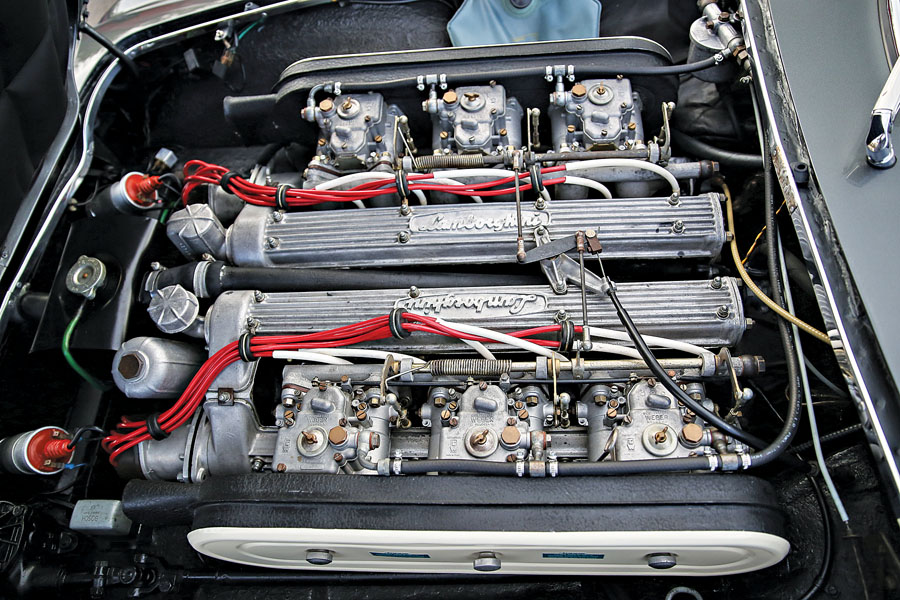SCM Analysis
Detailing
| Vehicle: | 1965 Lamborghini 350GT |
| Years Produced: | 1964–66 |
| Number Produced: | 120 |
| Original List Price: | $13,900 |
| SCM Valuation: | $726,000 |
| Tune Up Cost: | $3,500 |
| Chassis Number Location: | Engine compartment on firewall plate |
| Engine Number Location: | In center of head on top of block |
| Club Info: | Lamborghini Registry |
| Website: | http://www.lamborghiniregistry.com |
| Alternatives: | 1966 Ferrari 330 GTC, 1965 Maserati Mistral, 1965 Aston Martin DB5 |
| Investment Grade: | B |
This car, Lot 24, sold for $627,000, including buyer’s premium, at Gooding & Company’s Amelia Island Auction on March 9, 2018.
It’s remarkable to consider that 55 years after its founding, Lamborghini is still in business. Many dreamers worked to bring their vision of a world-beating GT car to the market after World War II. Most saw those ideas either disappear in a cloud of vaporized cash — or never make it past the stage of a prototype and hopeful stories and photos in enthusiast magazines.
Early Lamborghinis getting new respect
Ferruccio Lamborghini was wealthy — but he was also smart enough to hire the right people and let them do their jobs. He didn’t allow his emotions to carry his team to excess. Instead, he encouraged them to build the kind of car he and his friends would buy.
Fast, comfortable, reliable and memorable in appearance, the Lamborghini 350GT is a tribute to the man in that, decades after he sold the firm, Lamborghini has still maintained a very clear market identity.
While the Miura, Countach and Diablo defined the Lamborghini brand for a very long time — and continue to be the star cheerleaders — the rest of the squad are hardly wallflowers. Just as many collectors overlooked the early 356 and Ferrari models in favor of their more glamorous heirs, so it was with the 350GT and 400GT Lamborghinis. In the minds of the unknowing, they were little more than the warm-up act for the Miura.
That began to change quite a while ago and continues to do so.
What is increasingly driving — pun fully intended — the market is usability. As news of the dynamic capabilities of these early Lamborghinis continues to spread, more people share firsthand the rewards of owning one. As I’ve written several times in SCM, I was the fortunate owner of a 1969 Islero 400GT.
It was a fabulous car, great to drive and not at all bad-looking.
I enjoyed its rarity and performance at a price that was a fraction of the price of a Ferrari 365 GTC — the model Enzo was forced to introduce to match the performance of the 4-liter Lamborghini V12. Back when I bought mine in 2005, the $59k it cost me was about 35% of the price of a 365 GTC.
A “best in the world” 1965 Ferrari 275 GTB might bring over $2 million, while a comparable Lamborghini 350GT would still give good change back from a million-dollar check. The line forms to the left as to the relative merits of each. I’ll join you there in a bit.
A screaming deal? Sort of
So, was our subject car a screaming deal? Yes and no. It immediately pulled my eye at the auction preview, with its great color scheme.
On closer inspection it held up pretty well, with good panel fit and paint, complemented by freshly plated bumpers. The interior did indeed have the look of originality, as it was nicely broken-in and inviting. The near-period aftermarket steering wheel was not my favorite, but it didn’t look out of place.
Not surprisingly on an unrestored but refurbished car, the wheel spinners showed use, and the delicate rear badge showed evidence of some tweaking from being removed and replaced during the two color changes.
The engine compartment was clean but clearly a working environment. All in all, it appeared to be a very attractive car to drive.
On a pre-sale estimate of $600,000 to $700,000, it hammered sold below low estimate at $527,000. The January 2018 sale of 350GT chassis 0253 at $670,000 on the hammer, $737,000 with commission, may have seemed dramatically better. However, chassis 0253 carried a pre-auction estimate of $750,000 to $825,000, so it actually performed about the same as our subject car in relative terms. Chassis 0253 had also had restoration work done that made it more attractive to a wider auction audience.
It’s also interesting to consider that both cars have a fully known history from new, with few private owners and a substantial period of static storage. That last fact is the greatest pity of all. While they both may have proven to be assets that appreciated nicely in the past few decades, an even greater pleasure still awaits the new owners — that of experiencing a 350GT on the road.
Lamborghini Polo Storico
Another factor to be considered in looking at the market for early Lamborghinis is Lamborghini Polo Storico. Created a little over a year and a half ago, this Lamborghini factory division provides historical certification through the company archives.
Modeled on the Mercedes Classic Center, the Polo Storico can give a complete description of the specification of almost every Lamborghini manufactured. Their goal is to assemble a complete catalog of spare parts, technical support during restorations, and to offer complete restorations through an internal shop.
All of this is positive for Lamborghini owners and potential owners who want to actually use a car like our subject 350GT.
As such, our subject 350GT may prove to be a very good buy. While the overall trend in prices for the 350GT has seen some softening, in line with that of other cars of this type, its market remains one of individual examples. On this day, this was market price. ♦
(Introductory description courtesy of Gooding & Company.)
